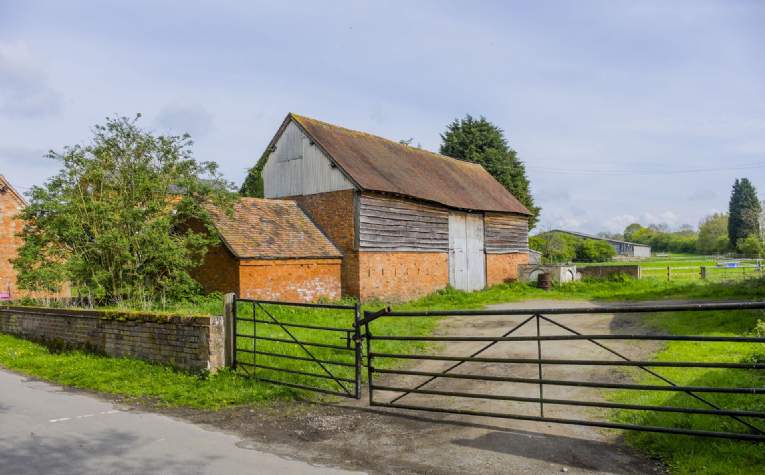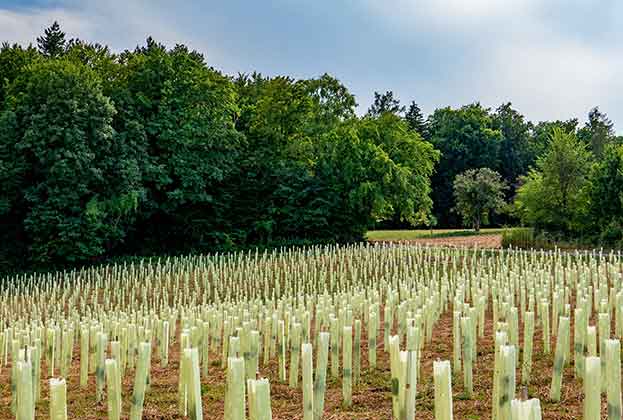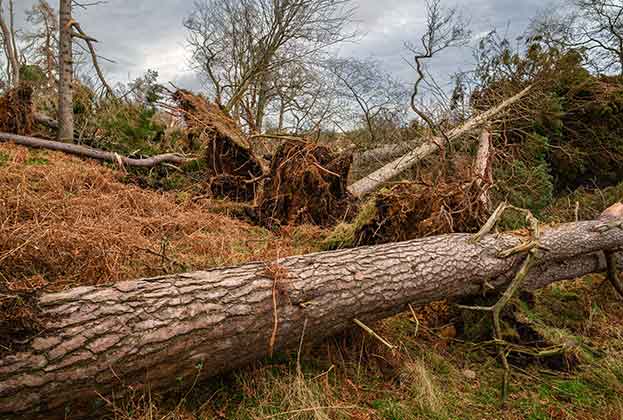Biodiversity net gain (BNG) is a new approach to development which requires that ‘habitats for wildlife must be left in a measurably better state that they were in before the development’.
BNG will have a big impact on development and planning in England once it becomes a mandatory requirement in 2023. This means developers will have to create a 10 per cent biodiversity uplift on all their developments, either through on-site or off-site biodiversity provision, or by purchasing statutory credits. Biodiversity values are calculated using the Government’s Biodiversity Metric. See our previous blog for an explanation of the principles of BNG.
Crucially, for rural land managers, the creation of an off-site biodiversity market offers an opportunity to monetise habitat creation, with the market for off-site biodiversity units in England estimated to be between £135 million and £274 million per year (Eftec 2021).
We have known about BNG for several years, but there have always been numerous known unknowns in terms of how it will actually operate as regulation and a compliance-based marketplace. The Government has recently launched a consultation which provides more detail on what BNG might look like on the ground. Below is the the key information:
1. Local authorities will be funded The Government has confirmed that it wants to provide funding for local authorities so that they can effectively implement BNG.
2. The mitigation hierarchy is key The mitigation hierarchy promotes on-site biodiversity uplift before off-site habitat creation, however for some developers this may not be practical or economically viable. Eftec’s market assessment assumes 50 per cent of BNG will be delivered off site.
3. Biodiversity gain plans These will contain details of how the developer intends to meet BNG obligations. The plan will need to be submitted and approved before development starts. The Government intends to introduce a consistent format for the gain plan, across all local authorities.
4. Conservation covenants and planning obligations In order to count towards a development’s net gain requirement, off-site biodiversity gains will need to be secured through either a conservation covenant or a planning obligation. Offsite biodiversity units are legally required to be managed for at least 30 years, and very possibly longer.
5. Timings Off-site biodiversity gain will not need to be completed prior to the sale of the BNG units. However, off-site works must commence as soon as is feasible, and no more than 12 months after the BNG condition is discharged. Habitat created or enhanced after 30 January 2020 will be eligible for the registration and sale of biodiversity units.
6. Habitat banks will be encouraged The Government wants to incentivise the creation of habitat banks in order to develop larger scale strategic sites for nature and to smooth out the supply and demand within the biodiversity unit market.
7. BNG site register This will be an online, centralised, publicly available register that will detail which off-site biodiversity units are allocated to which development. It will be a legal requirement that off-site biodiversity gain sites are uploaded to the register.
8. Pricing and brokerage The Government is intending that brokerage of off-site agreements will be left to the private market or third parties, and that the pricing of units will be agreed between buyers and sellers. Current prices vary from £10,000 to £40,000 per unit.
9. Ecosystem service stacking will be possible The intention is that land managers should be able to combine payments for biodiversity units with other payments for environmental services (for example nature-based carbon and nutrient mitigation) from the same parcel of land, provided they are paying for distinct, additional outcomes.
10. Monitoring and verification Planning authorities will set specific monitoring requirements as part of planning conditions and obligations used to secure off-site habitat enhancements. It will be the landowner’s or developer’s responsibility to ensure monitoring and reporting obligations are fulfilled.
These new proposals provide much-needed clarity to stakeholders in both the rural and development sectors on the vision for how BNG will function. However, it is important to remember that the proposals within this consultation are subject to change, so nothing is set in stone.
.jpg)



.jpg)
.jpg)



.jpg)
.jpg)